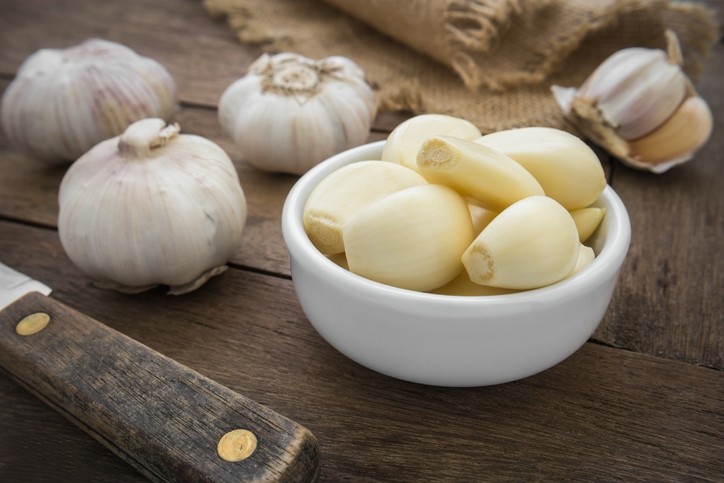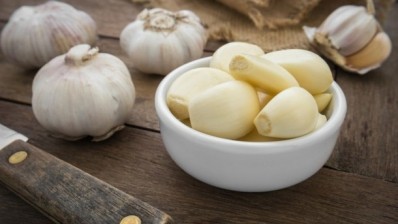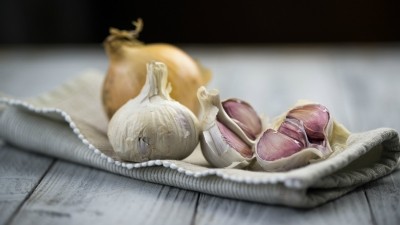Frequent consumption of raw garlic associated with lower liver cancer risk in China population

Researchers from USA and China said the association was more significant compared to those ingesting no raw garlic or less than twice per week.
Several studies on garlic consumption and its inverse association with mortality, as well as other cancers including stomach, colon, breast, lung, prostate, and esophagus have been reported.
But, researchers believed this is the first epidemiologic study on raw garlic intake against liver cancer.
The findings were published in the journal Nutrients.
Study design
The study was conducted in Jiangsu, China, from 2003 to 2010. Four counties were evaluated, including Dafeng, Ganyu, Chuzhou and Tongshan.
At the same time, four parallel, individually-matched case-control studies were conducted on cancers of the esophagus, stomach, liver and lung.
Random samples of healthy individuals were selected from the source population as controls.
Liver cancer patients were identified from the respective county cancer registries and only newly diagnosed primary liver cancer within 12 months were recorded.
People with a history of any cancer were excluded from the study.
A total of 2011 incident liver cancer cases and 7933 randomly selected population-controls were documented.
Participants were interviewed face-to-face on their weekly raw garlic consumption through a questionnaire and categorised into three intake levels: never, less than twice per week and twice or more per week.
Serum markers of hepatitis B virus (HBV) and hepatitis C virus (HCV) infection were also assayed.
Findings
The study found that frequent consumption of raw garlic (more than twice per week) showed an inverse association to liver cancer, which suggests the potential preventive effect of raw garlic intake.
The researchers explained the mechanisms of raw garlic on cancer development may include, “modulation of metabolising enzymes, such as cytochrome P450s and glutathione S-transferases, which may have implications for the deactivation or detoxification of carcinogens, suppression of the formation of DNA adducts, induction of cell-cycle arrest, apoptosis, cell differentiation and cell invasion.”
Previous studies have reported garlic’s anti-cancer effects in experimental studies, which were attributed to garlic’s organosulfur compounds, including diallyl sulfide (DAS), diallyl disulfide (DADS), diallyl trisulfide (DATS) and ajoene.
Researchers also said that the inverse association between high consumption of raw garlic and liver cancer were significant among Hepatitis B positive individuals and frequent alcohol drinkers.
“It is possible that the damage to liver cells caused by long-term inflammation and irregular regeneration are not reversible, as HBV infection is a dominant risk factor for liver cancer. Raw garlic intake might not be effective in reversing the severe liver damage induced by HBV,” they speculated.
Moreover, they observed inverse associations of raw garlic intake with liver cancer among frequent alcohol drinkers, further suggested protective benefits of raw garlic for people with known risk factors.
The researchers confirmed a limitation in their study, “We could not assess or compare different processes in preparation of garlic (raw, pickled or cooked), which limited our ability to study the associations of cooked garlic, garlic powder, or garlic isolates’ intakes with liver cancer.”
They recommended, “Future studies should also collect the data on methods of garlic preparation, which might gain additional value in the study of garlic in relation to liver cancer.”
The researchers concluded that raw garlic consumption was inversely associated with liver cancer especially in HBV infected people as well as heavy alcohol drinkers, and could provide a possible dietary intervention to reduce liver cancer in the Chinese population.
“If the preventive effect could be confirmed in the future studies, we would recommend to have more raw garlic on dining tables, or to develop products with effective extracts from raw garlic,” they said.
Source: Nutrients
https://doi.org/10.3390/nu11092038
“Raw Garlic Consumption and Risk of Liver Cancer: A Population-Based Case-Control Study in Eastern China”
Authors: Xing Liu, et al.













